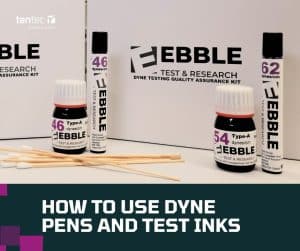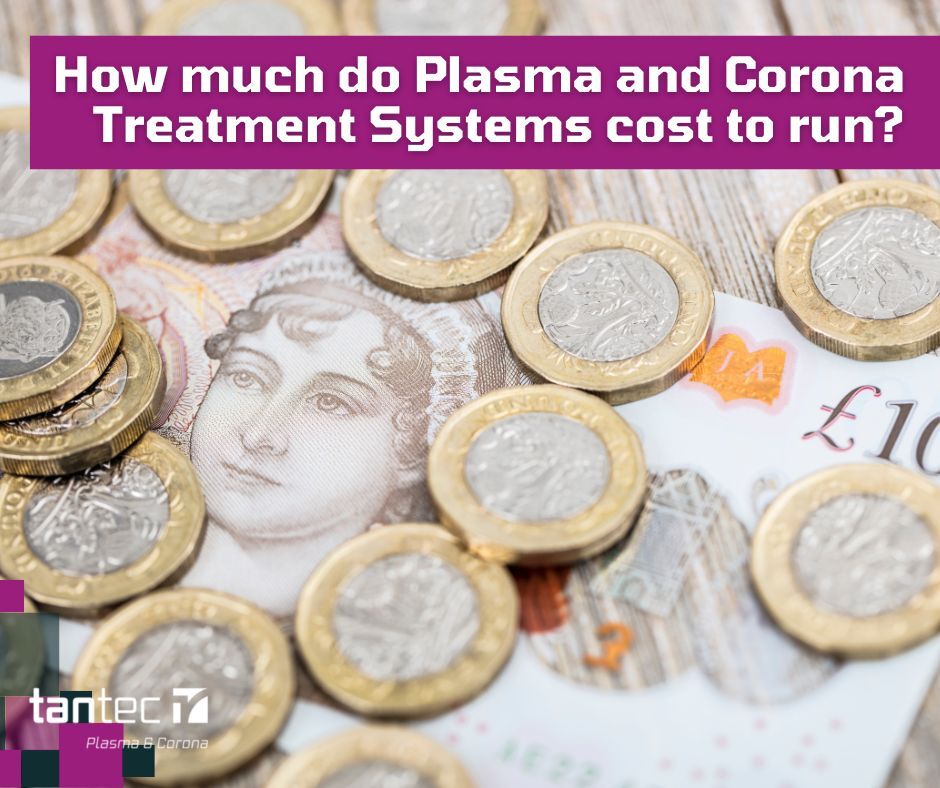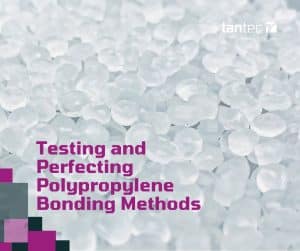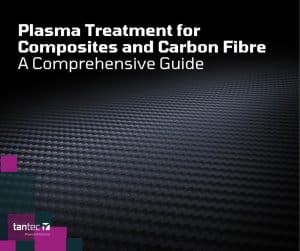
How to use Dyne Pens and Test Inks
Read this to find out the official way to get

Plasma and corona systems are usually the green and cost-effective way of pre-treating a surface to improve adhesion. This might be in the medical sector where the safety-critical print is being adhered to a polymer syringe, or automotive where foam or leather is being bonded onto a moulded plastic interior part. In this blog we’ll take a look into how much Plasma and Corona Treatment Systems cost to run?
The main two consumable costs for any machine utilising this technology will be power and compressed air. Ongoing maintenance, servicing and consumables are a consideration for some systems which is shown below for key systems.
References to energy costs are based on 40p/kWh which was based on a February 2023 commercial energy quote from EDF Energy. Take a look into how much Tantec’s plasma and corona treatment systems cost.
SpotTEC and PlasmaTEC are nozzle-type devices that are usually used mounted on robots or a moving arm like an XY table, or can be static above a moving line like a rail attached to a bowl feeder or an extrusion line.
When used at full power both devices run at around 500w per head. For a typical 8-hour production day, this will mean a maximum of 4kWh of power usage that would be seen on a continuous extrusion line but would likely be much lower, possibly less than 1kWh for use on a robot where loading, robot movement, and other activities take up some of the cycle time.
This power use would cost between 40p and £1.60 per 8-hour shift, per nozzle.
SpotTEC houses its own air supply, so there aren’t any additional costs. PlasmaTEC requires a larger supply and will use around 30L/min per nozzle. How this is generated can vary costing – for an industrial compressor, this won’t be significant and will only be a small portion of the running costs. Running on a standalone compressor is likely around 500w, so the compressor power consumption should be similar to or less than the machines themselves.
It is generally good practice to perform preventative maintenance at least once per year, per shift. A single 8-hour shift should require just one service, but a monthly or bi-annual visual check would be sensible to catch anything that might develop.
Common consumable parts for nozzle systems are wearing electrodes which can be changed by your engineering team or as part of a service contract. For single-head servicing, it is likely to cost £100 to £300 per nozzle for parts only and £300 to £1,500 for an engineer visit, depending on the travel distance and the number of heads.
Spare parts are recommended, especially for high-uptime systems. At Tantec UK & Ireland, we carry a comprehensive level of stock parts from our UK site and offer rental units for worst-case scenarios.
Vacuum chambers generally run at less than 2kW for the main treatment machine, but they can require large, and powerful vacuum pumps. Some systems may need a compressed air supply; it’s pressure rather than the volume so the usage is negligible.
Using a lower power or a smaller pump can save a lot over the year on larger systems, but these larger systems can treat several parts in a single run. See some typical system running costs in the table below:
| System | Running Power | Typical kWh used per 8 hour shift | Typical Cost per 8 hour shift (Feb 2023) | |
|---|---|---|---|---|
| Small System, treatment on 60% of time | Vacuum Plasma Machine | 0.3kWh | 1.5kWh | 4.7kWh = £1.88 |
| Vacuum Pumps | 0.4kWh | 3.2kWh | ||
| Medium System, treatment on 60% of time | Vacuum Plasma Machine | 1kWh | 4.8kWh | 16.8kWh = £6.72 |
| Vacuum Pumps | 1.5kWh | 12kWh | ||
| Large System, treatment on 60% of time | Vacuum Plasma Machine | 2kWh | 9.6kWh | 69.6kWh = £27.84 |
| Vacuum Pumps | 7.5kWh | 60kWh |
The main chamber and system have very few consumable parts, including the door seal which will degrade over time. The vacuum pumps require servicing, usually recommended once per year per shift. This servicing mainly includes fresh oil and filters within the system and ranges from £250 for smaller systems to £2,000 for larger systems, possibly more with travel/ shipping and engineering time.
Corona treaters generally only use power, though some may use compressed air. A secondary requirement of corona treaters is to extract or filter ozone on all systems.
Power required for corona treaters is usually no more than 2kW when treating, but can be as little as 200w for smaller systems. The extraction consists of an extraction fan which will likely run around 300w.
| System | Running Power | Typical kWh used per 8 hour shift | Typical Cost per 8 hour shift (Feb 2023) | |
|---|---|---|---|---|
| Low Power, On 50% of time | Corona Treater | 0.2kWh | 0.8kWh | 3.2kWh = £1.28 |
| Extraction | 0.3kWh | 2.4kWh | ||
| Low Power, On 100% of time | Corona Treater | 0.2kWh | 1.6kWh | 4.0kWh = £1.60 |
| Extraction | 0.3kWh | 2.4kWh | ||
| High Power, on 50% of time | Corona Treater | 2kWh | 4kWh | 6.4kWh = £2.56 |
| Extraction | 0.3kWh | 2.4kWh | ||
| High Power, on 100% of time | Corona Treater | 2kWh | 8kWh | 10.4kWh = £4.16 |
| Extraction | 0.3kWh | 2.4kWh |
Many corona treatment systems only require cleaning as their main service, needing to be kept free of dust and debris build-up with a weekly or monthly clean down depending on the environment.
Extraction systems will require replenishing; often suggested to be performed once per year, per shift, although this can depend on the system. Those services can be offered on-site or return to base and cost a few hundred pounds.
Plasma and corona treatment units are energy efficient and have a high degree of uptime with minimum servicing. Breakdowns obviously can happen; spares, rentals, and support are offered from our UK site to keep customers running. For more information on how much plasma and corona treatment cost, contact one of our experts today.

Read this to find out the official way to get

Polypropylene (PP) bonding is traditionally a difficult task due to

Composites are becoming increasingly important in manufacturing, whether these are
40A Crossgate Road
Park Farm Industrial Estate
Redditch
B98 7SN
Tel: 01527 304 004
Email: info@tantec-uk.com
